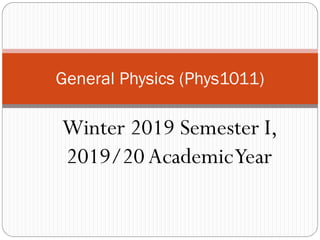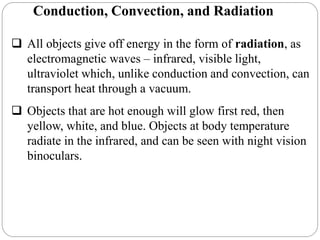This chapter discusses key concepts in heat and thermodynamics including:
- Temperature scales and the zeroth law of thermodynamics which defines temperature.
- The differences between heat and work as means of energy transfer.
- Specific heat, which is the energy required to change an object's temperature, and latent heat, which is energy absorbed or released during phase changes with no temperature change.
- Methods of heat transfer including conduction, convection and radiation. Conduction involves direct contact while convection involves fluid movement and radiation involves electromagnetic waves.































































